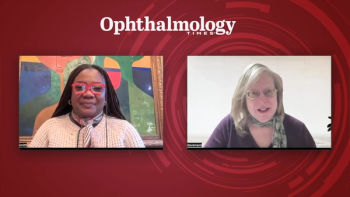
Diagnosing neurosyphilis in a patient with a non-classic presentation
Key Takeaways
- Syphilis can present with non-specific symptoms, complicating diagnosis, especially when co-infections like tuberculosis are suspected.
- Ocular syphilis, a form of neurosyphilis, often manifests as uveitis and requires aggressive treatment with intravenous penicillin.
A complex case of uveitis linked to syphilis highlights the need for thorough history-taking and multidisciplinary management in diagnosis and treatment.
Dhruv Sethi, MD, and colleagues reported the complex case of a patient who presented with uveitis and a skin rash and described the uncommon presentation with confounding test results.1 He is from the Departments of Ophthalmology in the Retina Group of Washington, Fairfax, VA, and Georgetown University, Washington, DC.
He was joined in this case report by ophthalmologists from Case Western Reserve University and University Hospitals Cleveland Medical Center, both in Cleveland; and Wayne State University School of Medicine, Henry Ford Hospital, and Henry Ford Health System, all in Detroit.
Syphilis is a commonly occurring sexually transmitted disease; however, diagnosis can sometimes be problematic because, as the investigators explained, “the initial presentation can vary widely and be non-specific, depending on the duration of the disease.”
The stages of syphilis are classified as primary syphilis, the initial stage with a genital chancre; secondary syphilis with bacteremia and wide dissemination of the spirochete; and late or tertiary syphilis with chronic, end-organ complications that are typically cardiovascular or neurologic in nature,2 they explained.
They also pointed out that ocular syphilis, a form of neurosyphilis, typically manifests as uveitis presenting as anterior uveitis, posterior uveitis, panuveitis, retinitis, papillitis, and scleritis.3 The treatment of syphilitic uveitis, which accounts for only 1% to 2% of all cases of uveitis,4 varies based on the stage but usually warrants aggressive, prolonged intravenous penicillin.
Case report
A 38-year-old immunocompetent man presented with uveitis with blurry vision and a skin rash. He reported difficulty with nighttime vision, a 1-week history of large floaters that affected his vision, and that he had had similar visual symptoms sporadically over the previous 3 months and an illness resembling the flu. He reported biannual travel to Pakistan and sexual activity with men and women, with his most recent sexual encounter 6 months ago. He denied a previous history of sexually transmitted infections. He did not report genital lesions but did have a flu-like illness 3 months ago that was followed shortly thereafter by visual symptoms. The patient also described a 6-month history of a diffuse skin rash involving the palms and soles that persisted to this visit.
The uncorrected visual acuity levels in the right and left eyes, respectively, were 20/20 and 20/25, and intraocular pressures were normal. The right and left anterior chambers, respectively, had 0.5+ and 1+ cells and trace cells (0.5+) in the anterior vitreous bilaterally. Fluorescein angiography showed mild optic nerve inflammation. No posterior vitreous detachments or floaters were seen in either eye. Optical coherence tomography imaging suggested subtle vitritis.
Subsequent testing showed a positive QuantiFERON-tuberculosis (TB) Gold Plus assay, reactive syphilis IgM/IgG serology, 1:128 rapid plasma reagin (RPR), and angiotensin-converting enzyme positivity at 65 units/liter. Testing was negative for HIV, gonorrhea, and chlamydia. The rash was diagnosed as diffuse, maculopapular, and involving the soles, as most consistent with a flare-up of existing psoriasis.
The investigators commented on the findings, “Due to the results of the positive syphilis and tuberculosis testing and non-specific anterior and intermediate uveitis findings, the patient could not be differentiated as having uveitis secondary to one infectious cause over the other and was admitted to the infectious disease service.”
Treatment included a 14-day inpatient course of intravenous penicillin and topical prednisolone acetate 1% for local inflammatory control. Because of the negative chest X-ray and no respiratory tuberculosis symptoms, he was not treated for tuberculosis.
At the 1-month follow-up visit, the visual cloudiness, photosensitivity, and floaters improved, and the VA was excellent. At the 8-month visit, the syphilis was considered to have been effectively treated, and all visual concerns had resolved.
Sethi and colleagues concluded, “This case emphasizes the importance of acquiring a comprehensive history and review of symptoms in the setting of multiple infectious diseases with non-specific ocular examination findings. A multidisciplinary approach to management is of great significance to accurately diagnose and treat the underlying disease and achieve relief of symptoms. It was critical in the management of this patient to have a stepwise approach to managing inflammation and a contingency plan for the next treatment/etiology to address if the inflammation had persisted even after resolution of the syphilis infection.”
References
Sethi D, Mohiddin O, Kelleher C, et al. Syphilis uveitis: a case of Occam’s razor, Hickam’s dictum, and Crabtree’s bludgeon. Cureus. 2025;17:e89329. doi:10.7759/cureus.89329
O'Byrne P, MacPherson P.
Syphilis . Br Med J. 2019:365:l4159.10.1136/bmj.l4159 Zhang T, Zhu Y, Xu G.
Clinical features and treatments of syphilitic uveitis: a systematic review and meta-analysis . J Ophthalmol. 2017;2017:6594849.10.1155/2017/6594849 Jones NP.
The Manchester Uveitis Clinic: the first 3000 patients--epidemiology and casemix . Ocul Immunol Inflamm. 2015;23:118-26.10.3109/09273948.2013.855799
Newsletter
Don’t miss out—get Ophthalmology Times updates on the latest clinical advancements and expert interviews, straight to your inbox.













































